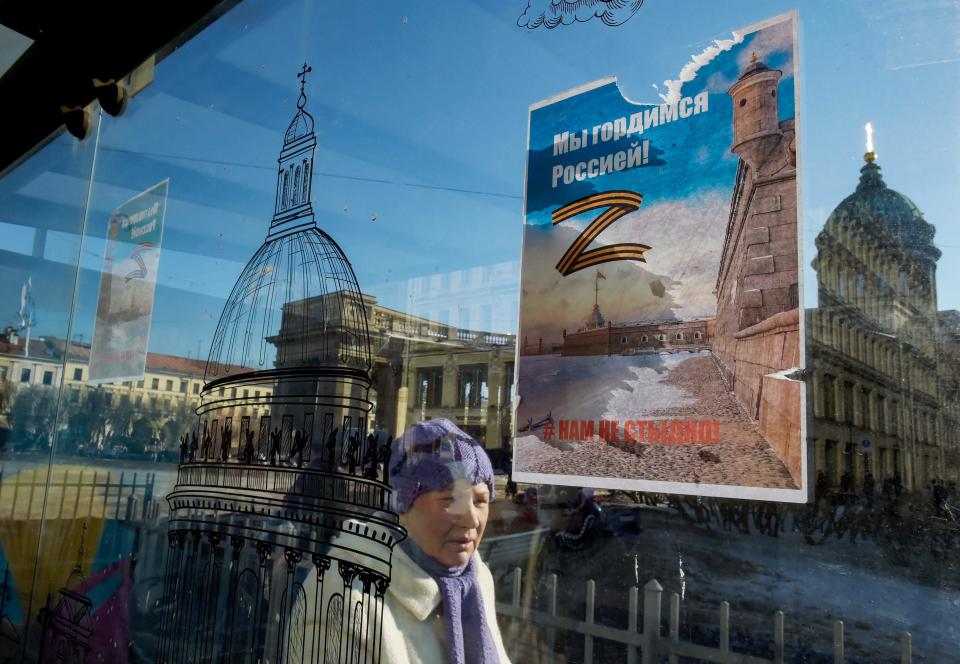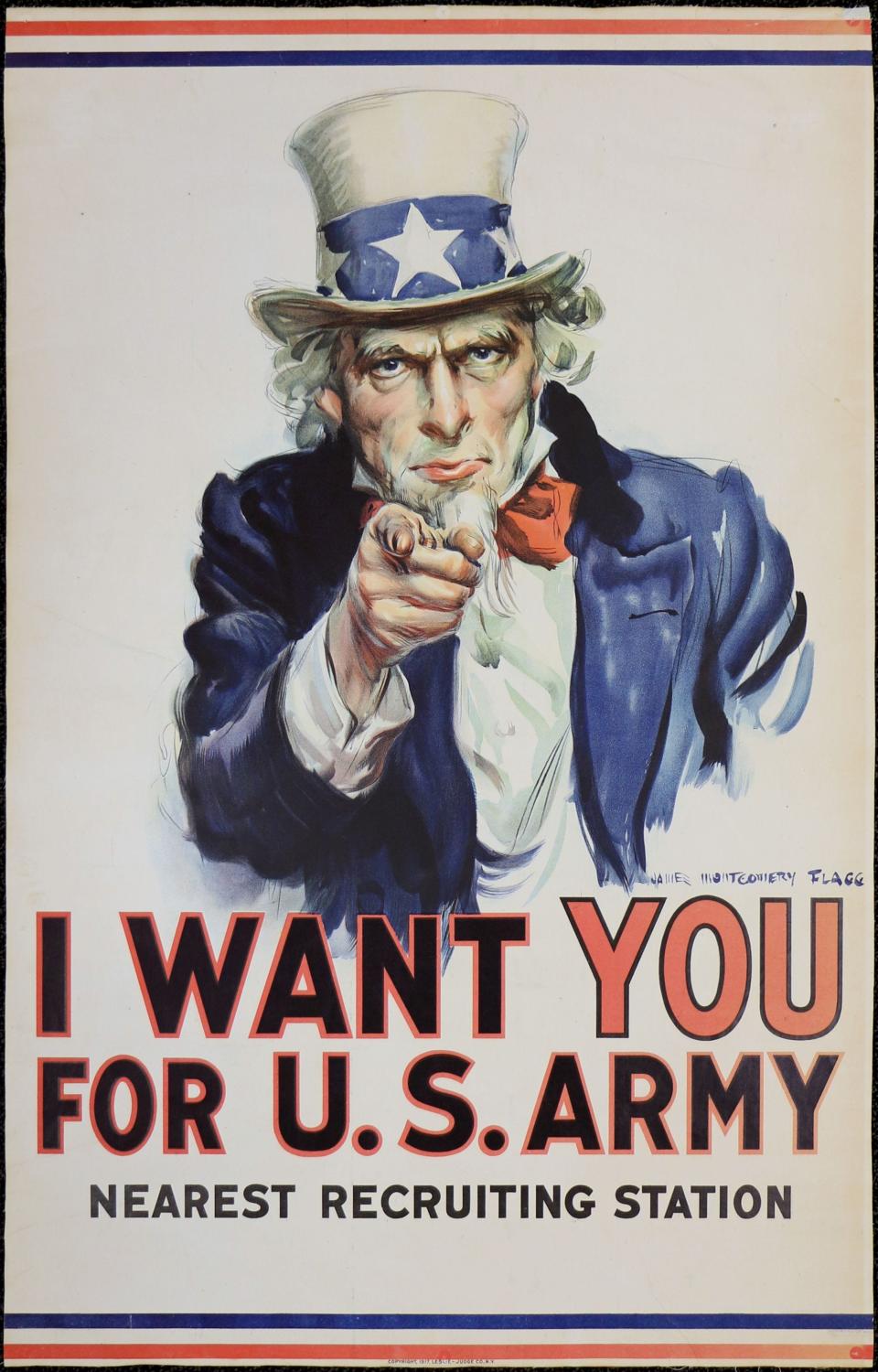Russia’s ‘firehose of falsehood’ in Ukraine marks latest use of propaganda to try to justify war
- Oops!Something went wrong.Please try again later.
- Oops!Something went wrong.Please try again later.
WASHINGTON – In the daily diet of propaganda that Russia feeds its citizens, Ukrainians are Nazis, Russian soldiers are liberators, Americans are schemers and Ukrainian forces are practitioners of satanism.
None of those falsehoods compares with an epic tale spread by the British government during World War II.
A story that hit some American newspapers in 1941 detailed how British troops parachuted into Nazi-occupied France, overpowered German guards at an airfield, destroyed 30 planes, took 40 Germans hostage and safely made their escape back to England aboard torpedo boats.
It was an incredible tale of British bravery and chutzpah. But none of it was true.
Britain’s intelligence service fabricated the story and planted it in American newspapers in a covert campaign to persuade the United States to enter the war.
Russia has drawn global condemnation for its use of misinformation and censorship of outside voices to stir up pro-Russian sentiment in its war against Ukraine. But governments throughout history have often relied on less-than-truthful narratives and outright fabrications to rally support for wars or achieve other political goals.
“It’s important to remember that the good guys, as we now think of them, have used fakes and disinformation,” said Nicholas Cull, an expert on propaganda at the University of Southern California.

A 'firehose of falsehood'
Anton Shirikov, a researcher at the University of Wisconsin, sees clear parallels between the misinformation campaign Russia is waging in support of its war in Ukraine and how propaganda has been used in previous conflicts.
Russia portrays the war in Ukraine as part of a broader struggle with the West – a narrative it circulated years earlier to defend its involvement in the civil war in Syria, Shirikov said.
Russia invokes World War II and Nazism in an effort to smear Ukrainian leaders, including attacks on President Volodymyr Zelenskyy. Russian Foreign Minister Sergey Lavrov fanned those flames when he raised the unproven claim that Adolf Hitler had Jewish ancestry. Zelenskyy, who is Jewish, accused Russia of spreading antisemitic tropes.
“Right now, at times, Russian propaganda even equates Nazis and Western civilization,” said Shirikov, who specializes in propaganda and misinformation.
Russia’s propaganda machine is a “firehose of falsehood” whose primary target audience is Russians themselves, said Christopher Paul, senior social scientist at the Rand Corp., a global policy think tank based in Santa Monica, California.
“It isn’t new for a country to propagandize their domestic audience during wartime,” Paul said. “Maintaining the national will to fight is important for a country when they’re at war.”
PIERCING THE PROPAGANDA VEIL: US, Schwarzenegger, hackers give Russians uncensored view of Ukraine war
Propaganda from World War I through Vietnam
World War I was the first conflict in which mass media and propaganda played a significant role in attempting to influence public opinion, according to the National WWI Museum and Memorial in Kansas City, Missouri.
Television hadn’t been invented, and radio was in its infancy, yet governments found ways to rally public support for the war effort and demonize their enemy.
The United States and other nations mass-produced war posters by the millions and plastered them on buildings, fences and any other place with a flat surface, said Doran Cart, the museum’s senior curator.
“As much as cartridges, artillery shells and helmets, they were flying off the production line,” Cart said.
In the USA, the posters promoted war bonds and encouraged Americans to enlist. One of the most iconic images from the era was James Montgomery Flagg's recruitment poster that showed Uncle Sam pointing his finger at the viewer and declaring, “I Want You For U.S. Army.”
A German placard from the era urged women to cut and sell their hair to support the war effort. An Australian flyer pictured an ape-like monster wearing a German spiked helmet and grasping a globe with bloody hands. The poster contained no text, but the message was obvious.

President Woodrow Wilson’s administration created the first true U.S. propaganda agency, the Committee on Public Information, to influence public opinion in support of the war. The agency oversaw the production and distribution of pamphlets, news releases, magazine ads, films and school campaigns to promote American involvement in the war.
The committee recruited volunteers known as Four Minute Men to give pro-war speeches in movie theaters, churches, synagogues and other public spaces. The recruits – men and women trained by the government – got their name by delivering their message in theaters during the four-minute breaks needed to change movie reels. Armed with government-approved topics, they urged Americans to buy Liberty Bonds and Thrift Stamps, recited patriotic poems about American soldiers or warned of German atrocities.
The speeches were effective, Cart said, because “if it’s someone speaking to you, it tends to be more believable.”
The propaganda campaigns continued during World War II. The British government bought controlling interest in a small news agency and used it to distribute made-up stories about secret Allied victories and raise questions about Hitler’s sanity, Cull said. Britain circulated a fake Nazi map that purported to show Germany’s plans to conquer South America.
During the Vietnam War, the U.S. government exaggerated a confrontation with the North Vietnamese in the Gulf of Tonkin, giving President Lyndon Johnson an opening to escalate U.S. military involvement in the conflict.
'WAR CRIMINAL': As Biden gets personal with Putin, US, Russia relationship hits a dangerous crisis
'Same kinds of false baloney'
What’s most striking about Russia's propaganda campaign in its war against Ukraine is its censorship of outside voices, Paul said.
“State-controlled media is still spewing the same kinds of false baloney that they have been for quite a while,” he said. “It hasn’t really changed. They’ve been accusing Ukraine’s government of being fascists or Nazis for many years. But what’s different is that they’ve gone out of their way to cut off possible competing voices by closing down access to external social media, by passing incredibly restrictive laws.”
Russia even outlawed use of the words “war,” “assault” or “invasion” to describe its attack on Ukraine. Media outlets that ignore the ban can be blocked or fined.
Ukraine fights back, not only with weapons but with its own propaganda operation.
Billboards along Ukraine’s roads and highways taunt Russian soldiers and President Vladimir Putin. One includes a drawing of a Russian warship sinking in blood. Another shows a woman putting a gun in Putin’s mouth. A popular poster depicts Putin committing suicide by carving into his abdomen the letter “Z,” which Russian propaganda uses as a symbol for its invasion.
'WAKEUP CALL FOR AMERICANS': Russia, Ukraine in behind-the-scenes lobbying war over Nord Stream 2

'A shameless willingness' to spread falsehoods
Propaganda is most effective when it focuses on things that people already know or reinforces their fears or beliefs, Cull said.
“We see that not only in the way that Russia speaks to its people but in the way American political figures have spoken to their own populations, affirming prejudices that they know the population already has and exploiting those for political ends,” he said.
Russia’s propaganda machine is characterized by “a shameless willingness to disseminate partial truths or outright fiction” via the internet, social media, satellite television and traditional radio and television broadcasting, according to a 2016 Rand Corp. report co-written by Paul.
The report noted that Russia has a team of paid internet trolls who go onto online chat rooms, discussion forums and comment sections of news and other websites to attack or undermine views or information that run counter to Russian themes. One of the former cyber mischief-makers reported that the trolls are on duty 24 hours a day, working 12-hour shifts, and each has a daily quota of 135 posted comments of at least 200 characters, the report said.
Television is the main medium through which most Russians are fed propaganda, Shirikov said.
Russians may not believe everything they see on TV, Shirikov said, “but they are buying this general narrative that Ukraine and the West are united against Russians.”
“It’s hard for many people to believe that television could be lying about everything,” he said.
Michael Collins covers the White House. Follow him on Twitter @mcollinsNEWS.
'STAND WITH UKRAINE': US military aid to Ukraine surpasses $3 billion under Biden. Here's what's been provided
This article originally appeared on USA TODAY: Russia unleashes 'firehose of falsehood' to try to justify war Ukraine

